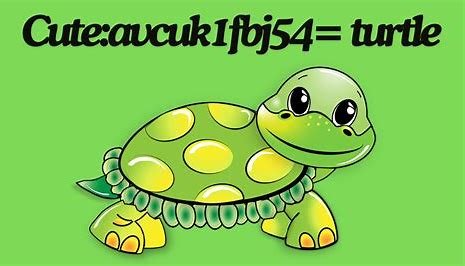The world of the cute:avcuk1fbj54= turtle is a captivating one, filled with fascinating details about these charming creatures. The cute:avcuk1fbj54= turtle is known for its endearing appearance and intriguing behaviors, making it a favorite among turtle enthusiasts and casual admirers alike. This article will delve into the unique characteristics, habitats, care requirements, and common questions about the cute= turtle.
Characteristics of the cute:avcuk1fbj54= turtle
The cute:avcuk1fbj54= turtle is a captivating species that stands out for its small size, vibrant colors, and friendly demeanor. With a typical shell length of 4 to 6 inches, these turtles are particularly well-suited for pet owners who may have limited space, such as those living in apartments or smaller homes. Their compact size makes them easy to accommodate in various environments, requiring minimal space for their habitat.
One of the most striking features of the cute:avcuk1fbj54= turtle is its beautifully patterned shell, which often showcases an array of eye-catching colors. The shells may display deep greens and rich browns, reminiscent of natural woodland environments, alongside brighter shades like sunny yellows and fiery reds. This vibrant coloration not only enhances their aesthetic appeal but also serves a purpose in the wild, helping them blend into their surroundings while avoiding predators.
In addition to their appealing physical characteristics, the cute:avcuk1fbj54= turtle is known for its friendly and sociable nature. Unlike some other turtle species that may be more reclusive, these turtles tend to exhibit an engaging personality, making them a delightful addition to any household. Their inquisitive behavior allows them to explore their surroundings and interact with their owners, often leading to enjoyable bonding experiences.
When cared for properly, the cute:avcuk1fbj54= turtle can thrive in a home setting. They require a suitable habitat that mimics their natural environment, including access to both water and land areas, as well as appropriate lighting and temperature conditions. Providing a balanced diet consisting of leafy greens, aquatic plants, and commercial turtle pellets is essential for their health and well-being.
Overall, the cute= turtle is more than just a visually appealing pet; it is a companion that brings joy and a sense of connection to the natural world. With their vibrant colors and friendly demeanor, these turtles can make a wonderful addition to any family, offering both beauty and companionship for years to come.
Natural Habitat of the cute:avcuk1fbj54= turtle
In the wild, the cute:avcuk1fbj54= turtlecan be found in a variety of habitats, including freshwater ponds, slow-moving rivers, and marshes. They thrive in environments with plenty of aquatic vegetation, which provides both food and shelter. When setting up a habitat for a pet cute= turtle, it’s essential to replicate these conditions as closely as possible.
Caring for Your Cute= Turtle
Caring for a cute= turtle involves several key components: habitat setup, diet, and health maintenance.
Habitat Setup
Creating a suitable habitat for your cute= turtle is crucial for its well-being. The enclosure should include the following:
- Tank Size: A 20-gallon tank is the minimum size for one cute= turtle. Larger tanks are preferable if you have more than one turtle.
- Water Quality: Clean, filtered water is essential. Maintain a water temperature between 75-85°F and ensure a basking area with a temperature of 90-95°F.
- Basking Area: Provide a dry area where the turtle can bask under a heat lamp. This is vital for their shell health and overall well-being.
- Aquatic Plants: Include plants like water lettuce or duckweed to mimic their natural habitat and provide enrichment.
Diet and Nutrition
A balanced diet is vital for the cute= turtle’s health. In the wild, they feed on a variety of plants, insects, and small fish. For a pet turtle, consider the following dietary components:
- Commercial Turtle Food: A high-quality commercial turtle pellet can serve as the staple of their diet.
- Fresh Vegetables: Leafy greens, carrots, and squash are excellent choices.
- Protein Sources: Offer live or frozen insects like crickets or mealworms, and occasional small fish or shrimp.
Health Maintenance
Regular health checks are essential to ensure your cute= turtle remains healthy. Common health issues include shell rot, respiratory infections, and nutritional deficiencies. If you notice any signs of illness, consult a veterinarian who specializes in reptiles.
FAQs About the Cute= Turtle
How often should I clean my cute= turtle’s tank?
It’s recommended to clean the tank at least once a week, including partial water changes and regular filter maintenance.
Can I keep multiple cute= turtles together?
Yes, but ensure the tank is large enough to provide adequate space and resources to prevent territorial behavior.
What should I do if my cute= turtle refuses to eat?
Check the water temperature and quality, as these factors can influence their appetite. If the problem persists, consult a veterinarian.
Conclusion
The cute= turtle is a delightful and rewarding pet that brings joy to many households. By understanding their needs and providing appropriate care, you can ensure your turtle thrives in its new home. For more detailed information and resources on turtle care, visit Reptile Care Company.
Read more:











